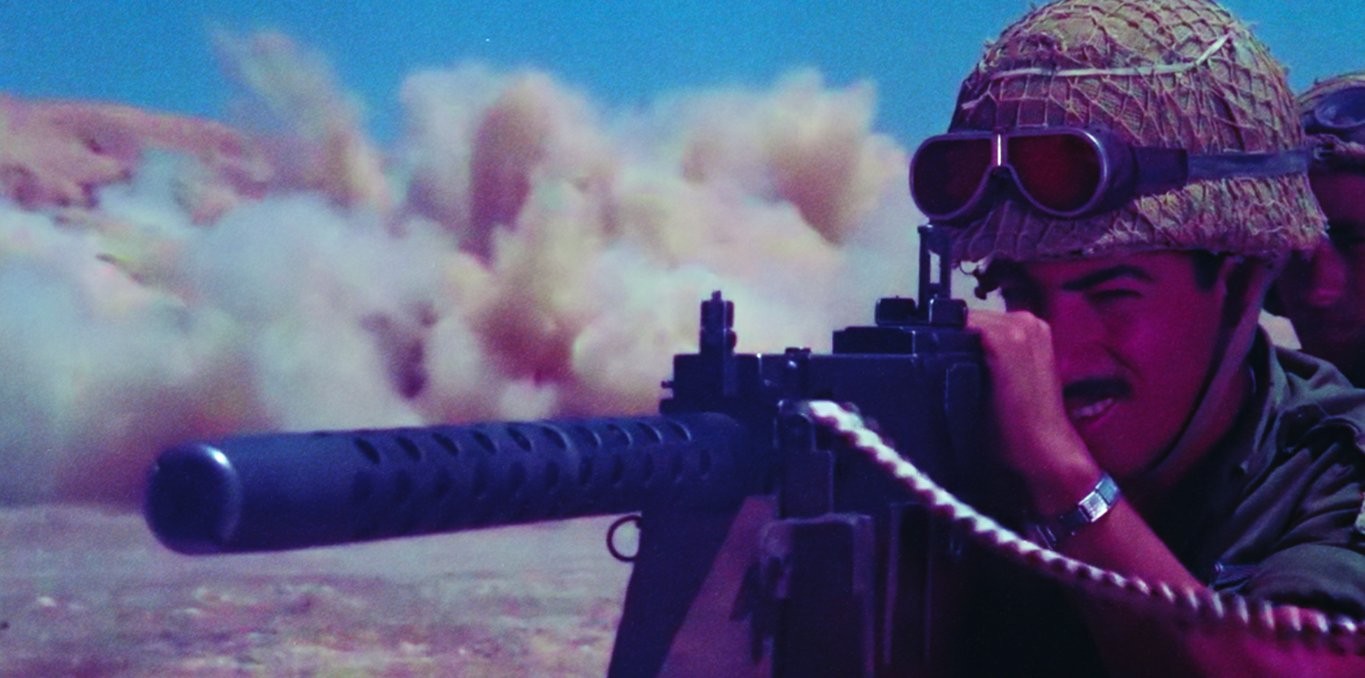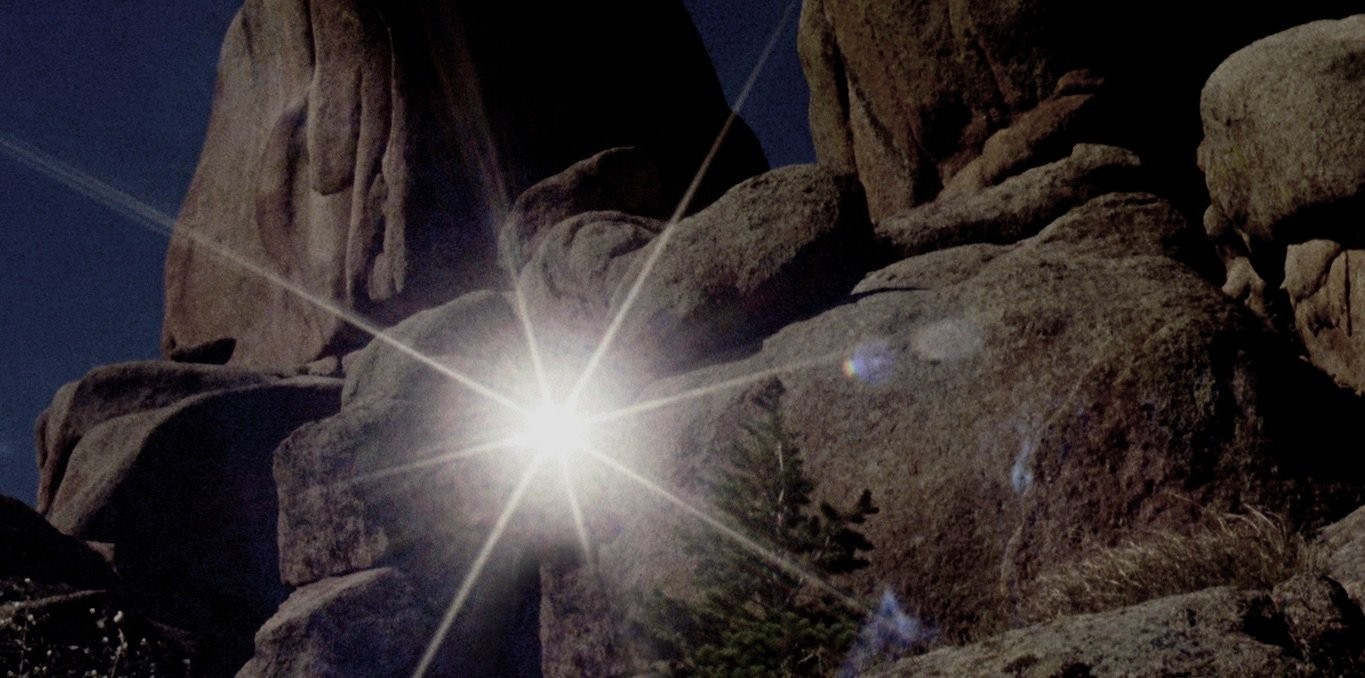Films préférés des programmateurs

11 products

Paradiso, XXXI, 108
Subscription access
_Paradiso, XXXI, 108_ ironically questions our view of war and occupation through archival footage from the Israeli army in the 1960s and 1970s. Palestinian filmmaker Kamal Aljafari creates a montage revealing scenes where acts of war appear simultaneously comic, mundane, and surreal, inviting a deep reflection on the representation of violence and power.

Last Things
Evolution and extinction from the point of view of rocks and various future others. The geo-biosphere is introduced as a place of evolutionary possibility, where humans disappear but life endures.

Délire atta
Subscription access
_Délire atta_ takes found footage and sound from six archival films and transforms them through a process of abstraction and recontextualization. Image and sound engage in a dialogue of texture and transformation, revealing unexpected resonances within the archive and generating new possibilities from what might otherwise be seen as fixed or obsolete.

About Some Meaningless Events
A group of young filmmakers ask residents of Casablanca for their opinions on Moroccan cinema as part of a film project. During the shoot, a dispute breaks out between a dockworker and his superior, resulting in the accidental death of the latter. Having captured the incident on film, the crew begins to question the man’s motives and reflect on the role of cinema in society and the forms it can...

2 pouces en haut de la carte
In the 70s, young people in Baie-Comeau - Hauterive were trying to find their place in an industrial society devoted to work and consumerism. Often left to their own devices as they waited to enter the job market, many of them sought their paths in artistic creation. The 1974 St. John's Day festival gave them a chance to shout out loud about their existence and shake up the existing order. We f...

Images of the World and the Inscription of War
Images of the World and the Inscription of War
Duration: 2h28_Images of the World and Inscription in War_ is an essay whose central motif is the aerial photograph of the camp at Auschwitz taken on April 4, 1944 by an American reconnaissance plane. On this photo, analysts identified the surrounding factories but not the concentration and extermination camp. Dialectic montage and a distanced commentary compose this film which analyses the conditions under ...

24 Hours or More
Subscription access
This feature film, made during an exceptionally feverish period of popular revolt that saw the joining of Quebec’s 3 main unions (CSN, FTQ, CEQ), is a cinematic essay by socially engaged filmmaker Gilles Groulx. Set against the backdrop of the 1970 October Crisis, the film is a frontal assault - denouncing a “consumer society” viewed as the ultimate embodiment of evil.

4125 Parthenais
A Romanian caretaker orchestrates arrivals and departures; she decides who will be allowed access to this noisy and anonymous building. Who lives at 4125 Parthenais? Primarily men, not so young anymore, most of them welfare recipients. People who have, out of frustration or by choice, withdrawn from the Capitalist society. A fallen suburbanite, a caretaker who thinks he’s an Earl, a gay Jehova’...

Mutts
Les pelages bruns, beiges, blancs et noirs se fondent à l’ocre de la terre et des murs inondés de soleil. Calme à l’heure du repos, l’endroit devient assourdissant quand vient le moment de nourrir les bêtes qui entament alors leur concert d’aboiements. Dans le refuge pour chiens errants d’Agadir au Maroc, plus de 750 animaux trouvent aide et protection en attendant d’être adoptés par une famill...

Anatomy of a Relationship
He works in the film industry, she's a teacher. They are bored to death. Soon, she gives up. They have been in a relationship for three years, they have a sex life, but one day, she wants out. Without him ever realizing, she has never experienced pleasure with him. He rebels and together they work on their technique.

The Wild Frontier
Winter 2016. The Calais Jungle is a growing city of about 12 000. In the early spring, the Southern zone, its shops, streets and houses, are completely destroyed. Its expelled population move their houses to the Northern zone to find shelter and keep on living. In the fall, the France organizes the permanent dismantling of the Jungle. But the Jungle is a mutating territory, a world-city, a city...

Paradiso, XXXI, 108
Subscription access
_Paradiso, XXXI, 108_ ironically questions our view of war and occupation through archival footage from the Israeli army in the 1960s and 1970s. Palestinian filmmaker Kamal Aljafari creates a montage revealing scenes where acts of war appear simultaneously comic, mundane, and surreal, inviting a deep reflection on the representation of violence and power.

Last Things
Evolution and extinction from the point of view of rocks and various future others. The geo-biosphere is introduced as a place of evolutionary possibility, where humans disappear but life endures.

Délire atta
Subscription access
_Délire atta_ takes found footage and sound from six archival films and transforms them through a process of abstraction and recontextualization. Image and sound engage in a dialogue of texture and transformation, revealing unexpected resonances within the archive and generating new possibilities from what might otherwise be seen as fixed or obsolete.

About Some Meaningless Events
A group of young filmmakers ask residents of Casablanca for their opinions on Moroccan cinema as part of a film project. During the shoot, a dispute breaks out between a dockworker and his superior, resulting in the accidental death of the latter. Having captured the incident on film, the crew begins to question the man’s motives and reflect on the role of cinema in society and the forms it can...

2 pouces en haut de la carte
In the 70s, young people in Baie-Comeau - Hauterive were trying to find their place in an industrial society devoted to work and consumerism. Often left to their own devices as they waited to enter the job market, many of them sought their paths in artistic creation. The 1974 St. John's Day festival gave them a chance to shout out loud about their existence and shake up the existing order. We f...

Images of the World and the Inscription of War
Images of the World and the Inscription of War
Duration: 2h28_Images of the World and Inscription in War_ is an essay whose central motif is the aerial photograph of the camp at Auschwitz taken on April 4, 1944 by an American reconnaissance plane. On this photo, analysts identified the surrounding factories but not the concentration and extermination camp. Dialectic montage and a distanced commentary compose this film which analyses the conditions under ...

24 Hours or More
Subscription access
This feature film, made during an exceptionally feverish period of popular revolt that saw the joining of Quebec’s 3 main unions (CSN, FTQ, CEQ), is a cinematic essay by socially engaged filmmaker Gilles Groulx. Set against the backdrop of the 1970 October Crisis, the film is a frontal assault - denouncing a “consumer society” viewed as the ultimate embodiment of evil.

4125 Parthenais
A Romanian caretaker orchestrates arrivals and departures; she decides who will be allowed access to this noisy and anonymous building. Who lives at 4125 Parthenais? Primarily men, not so young anymore, most of them welfare recipients. People who have, out of frustration or by choice, withdrawn from the Capitalist society. A fallen suburbanite, a caretaker who thinks he’s an Earl, a gay Jehova’...

Mutts
Les pelages bruns, beiges, blancs et noirs se fondent à l’ocre de la terre et des murs inondés de soleil. Calme à l’heure du repos, l’endroit devient assourdissant quand vient le moment de nourrir les bêtes qui entament alors leur concert d’aboiements. Dans le refuge pour chiens errants d’Agadir au Maroc, plus de 750 animaux trouvent aide et protection en attendant d’être adoptés par une famill...

Anatomy of a Relationship
He works in the film industry, she's a teacher. They are bored to death. Soon, she gives up. They have been in a relationship for three years, they have a sex life, but one day, she wants out. Without him ever realizing, she has never experienced pleasure with him. He rebels and together they work on their technique.

The Wild Frontier
Winter 2016. The Calais Jungle is a growing city of about 12 000. In the early spring, the Southern zone, its shops, streets and houses, are completely destroyed. Its expelled population move their houses to the Northern zone to find shelter and keep on living. In the fall, the France organizes the permanent dismantling of the Jungle. But the Jungle is a mutating territory, a world-city, a city...
